-
EXECUTIVE
-
SUMMARY
-
2.
-
MARKET INTRODUCTION
-
2.1.
-
Definition
-
2.2.
-
Scope of the Study
-
2.2.1.
-
Research Objective
-
2.2.2.
-
Assumptions
-
2.2.3.
-
Limitations
-
3.
-
RESEARCH METHODOLOGY
-
3.1.
-
Overview
-
3.2.
-
Data Mining
-
3.3.
-
Secondary Research
-
3.4.
-
Primary Research
-
3.4.1.
-
Primary Interviews and Information Gathering Process
-
Breakdown of Primary Respondents
-
Forecasting Model
-
Market Size Estimation
- Bottom-Up Approach
- Top-Down Approach
-
Data Triangulation
-
Validation
-
MARKET DYNAMICS
-
Overview
-
Drivers
-
Restraints
-
Opportunities
-
MARKET FACTOR ANALYSIS
-
Value Chain Analysis
-
Porter’s Five
- Bargaining Power of Buyers
- Threat of New Entrants
- Threat of Substitutes
- Intensity of Rivalry
-
Forces Analysis
-
5.2.1.
-
Bargaining Power of Suppliers
-
COVID-19 Impact Analysis
- Market Impact Analysis
- Regional Impact
- Opportunity and
-
Threat Analysis
-
6.
-
GLOBAL TANNIN MARKET, BY SOURCE
-
Overview
-
Plant
-
Brown Algae
-
GLOBAL TANNIN MARKET, BY PRODUCT
-
Overview
-
Hydrolysable
-
Non-Hydrolysable
-
Phlorotannin
-
GLOBAL TANNIN MARKET, BY APPLICATION
-
Overview
-
Leather Tanning
-
Wine
-
Production
-
8.4.
-
Wood Adhesives
-
8.5.
-
Anti-Corrosive Primers
-
Others
-
GLOBAL TANNIN MARKET, BY REGION
-
Overview
-
North America
- US
- Canada
-
Europe
- Germany
- France
- UK
- Italy
- Spain
- Rest of Europe
-
Asia-Pacific
- China
- India
- Japan
- South Korea
- Australia
- Rest of Asia-Pacific
-
Rest of the World
- Middle East
- Africa
- Latin America
-
COMPETITIVE LANDSCAPE
-
Overview
-
Competitive Analysis
-
Market Share Analysis
-
Major Growth Strategy in the Global Tannin
-
Market,
-
10.5.
-
Competitive Benchmarking
-
Leading Players in Terms of Number of Developments in the Global
- New Product Launch/Service Deployment
- Merger &
- Sales & Operating Income, 2022
- Major Players R&D Expenditure. 2022
-
Tannin Market,
-
10.7.
-
Key developments and Growth Strategies
-
Acquisitions
-
10.7.3.
-
Joint Ventures
-
10.8.
-
Major Players Financial Matrix
-
COMPANY PROFILES
-
Zhushan County
- Company Overview
- Financial Overview
- Products Offered
- Key Developments
- SWOT Analysis
- Key Strategies
-
Tianxin Medical & Chemical Co., Ltd.
-
Forestal Mimosa Ltd
- Company Overview
- Financial Overview
- Products Offered
- Key Developments
- SWOT Analysis
- Key Strategies
-
Tanin Sevnica D.D., S.A.
- Company Overview
- Financial Overview
- Products Offered
- Key Developments
- SWOT Analysis
- Key Strategies
-
Ajinomoto Omnichem
-
N.V
-
11.4.1.
-
Company Overview
-
11.4.2.
-
Financial Overview
-
11.4.3.
-
Products Offered
-
11.4.4.
-
Key Developments
-
11.4.5.
-
SWOT Analysis
-
11.4.6.
-
Key Strategies
-
11.5.
-
W.Ulrich Gmbh
-
11.5.1.
-
Company Overview
-
11.5.2.
-
Financial Overview
-
11.5.3.
-
Products Offered
-
11.5.4.
-
Key Developments
-
11.5.5.
-
SWOT Analysis
-
11.5.6.
-
Key Strategies
-
11.6.
-
Ever S.R.L
-
11.6.1.
-
Company Overview
-
11.6.2.
-
Financial Overview
-
11.6.3.
-
Products Offered
-
11.6.4.
-
Key Developments
-
11.6.5.
-
SWOT Analysis
-
11.6.6.
-
Key Strategies
-
11.7.
-
Laffort Sa
-
11.7.1.
-
Company Overview
-
11.7.2.
-
Financial Overview
-
11.7.3.
-
Products Offered
-
11.7.4.
-
Key Developments
-
11.7.5.
-
SWOT Analysis
-
11.7.6.
-
Key Strategies
-
11.8.
-
Polson Pty. Ltd.
-
11.8.1.
-
Company Overview
-
11.8.2.
-
Financial Overview
-
11.8.3.
-
Products Offered
-
11.8.4.
-
Key Developments
-
11.8.5.
-
SWOT Analysis
-
11.8.6.
-
Key Strategies
-
11.9.
-
Ucl Company (Pty) Ltd.
-
11.9.1.
-
Company Overview
-
11.9.2.
-
Financial Overview
-
11.9.3.
-
Products Offered
-
11.9.4.
-
Key Developments
-
11.9.5.
-
SWOT Analysis
-
11.9.6.
-
Key Strategies
-
11.10.
-
Tannin Corporation
-
11.10.1.
-
Company Overview
-
11.10.2.
-
Financial Overview
-
11.10.3.
-
Products Offered
-
11.10.4.
-
Key Developments
-
11.10.5.
-
SWOT Analysis
-
11.10.6.
-
Key Strategies
-
12.
-
APPENDIX
-
12.1.
-
References
-
12.2.
-
Related Reports
-
-
LIST OF TABLES
-
GLOBAL TANNIN
-
MARKET, SYNOPSIS, 2018-2032
-
GLOBAL TANNIN MARKET, ESTIMATES & FORECAST, 2018-2032 (USD
-
BILLION)
-
TABLE
-
GLOBAL TANNIN MARKET, BY SOURCE, 2018-2032 (USD BILLION)
-
GLOBAL TANNIN MARKET, BY PRODUCT, 2018-2032
-
(USD BILLION)
-
TABLE
-
GLOBAL TANNIN MARKET, BY APPLICATION, 2018-2032 (USD BILLION)
-
NORTH AMERICA: TANNIN
-
MARKET, BY SOURCE, 2018-2032 (USD BILLION)
-
NORTH AMERICA: TANNIN MARKET, BY PRODUCT,
-
NORTH AMERICA: TANNIN MARKET, BY APPLICATION, 2018-2032 (USD
-
BILLION)
-
TABLE
-
US: TANNIN MARKET, BY SOURCE, 2018-2032 (USD BILLION)
-
US: TANNIN MARKET, BY PRODUCT, 2018-2032
-
(USD BILLION)
-
TABLE
-
US: TANNIN MARKET, BY APPLICATION, 2018-2032 (USD BILLION)
-
CANADA: TANNIN MARKET,
-
BY SOURCE, 2018-2032 (USD BILLION)
-
CANADA: TANNIN MARKET, BY PRODUCT, 2018-2032 (USD
-
BILLION)
-
TABLE
-
CANADA: TANNIN MARKET, BY APPLICATION, 2018-2032 (USD BILLION)
-
EUROPE: TANNIN MARKET,
-
BY SOURCE, 2018-2032 (USD BILLION)
-
EUROPE: TANNIN MARKET, BY PRODUCT, 2018-2032 (USD
-
BILLION)
-
TABLE
-
EUROPE: TANNIN MARKET, BY APPLICATION, 2018-2032 (USD BILLION)
-
GERMANY: TANNIN MARKET,
-
BY SOURCE, 2018-2032 (USD BILLION)
-
GERMANY: TANNIN MARKET, BY PRODUCT, 2018-2032 (USD
-
BILLION)
-
TABLE
-
GERMANY: TANNIN MARKET, BY APPLICATION, 2018-2032 (USD BILLION)
-
FRANCE: TANNIN MARKET,
-
BY SOURCE, 2018-2032 (USD BILLION)
-
FRANCE: TANNIN MARKET, BY PRODUCT, 2018-2032 (USD
-
BILLION)
-
TABLE
-
FRANCE: TANNIN MARKET, BY APPLICATION, 2018-2032 (USD BILLION)
-
ITALY: TANNIN MARKET,
-
BY SOURCE, 2018-2032 (USD BILLION)
-
ITALY: TANNIN MARKET, BY PRODUCT, 2018-2032 (USD
-
BILLION)
-
TABLE
-
ITALY: TANNIN MARKET, BY APPLICATION, 2018-2032 (USD BILLION)
-
SPAIN: TANNIN MARKET,
-
BY SOURCE, 2018-2032 (USD BILLION)
-
SPAIN: TANNIN MARKET, BY PRODUCT, 2018-2032 (USD
-
BILLION)
-
TABLE
-
SPAIN: TANNIN MARKET, BY APPLICATION, 2018-2032 (USD BILLION)
-
UK: TANNIN MARKET, BY
-
SOURCE, 2018-2032 (USD BILLION)
-
UK: TANNIN MARKET, BY PRODUCT, 2018-2032 (USD BILLION)
-
UK: TANNIN MARKET,
-
BY APPLICATION, 2018-2032 (USD BILLION)
-
REST OF EUROPE: TANNIN MARKET, BY SOURCE, 2018-2032
-
(USD BILLION)
-
TABLE
-
REST OF EUROPE: TANNIN MARKET, BY PRODUCT, 2018-2032 (USD BILLION)
-
REST OF EUROPE:
-
TANNIN MARKET, BY APPLICATION, 2018-2032 (USD BILLION)
-
ASIA-PACIFIC: TANNIN MARKET, BY SOURCE,
-
ASIA-PACIFIC: TANNIN MARKET, BY PRODUCT, 2018-2032 (USD BILLION)
-
ASIA-PACIFIC:
-
TANNIN MARKET, BY APPLICATION, 2018-2032 (USD BILLION)
-
JAPAN: TANNIN MARKET, BY SOURCE, 2018-2032
-
(USD BILLION)
-
TABLE
-
JAPAN: TANNIN MARKET, BY PRODUCT, 2018-2032 (USD BILLION)
-
JAPAN: TANNIN MARKET,
-
BY APPLICATION, 2018-2032 (USD BILLION)
-
CHINA: TANNIN MARKET, BY SOURCE, 2018-2032 (USD
-
BILLION)
-
TABLE
-
CHINA: TANNIN MARKET, BY PRODUCT, 2018-2032 (USD BILLION)
-
CHINA: TANNIN MARKET,
-
BY APPLICATION, 2018-2032 (USD BILLION)
-
INDIA: TANNIN MARKET, BY SOURCE, 2018-2032 (USD
-
BILLION)
-
TABLE
-
INDIA: TANNIN MARKET, BY PRODUCT, 2018-2032 (USD BILLION)
-
INDIA: TANNIN MARKET,
-
BY APPLICATION, 2018-2032 (USD BILLION)
-
AUSTRALIA: TANNIN MARKET, BY SOURCE, 2018-2032
-
(USD BILLION)
-
TABLE
-
AUSTRALIA: TANNIN MARKET, BY PRODUCT, 2018-2032 (USD BILLION)
-
AUSTRALIA: TANNIN MARKET,
-
BY APPLICATION, 2018-2032 (USD BILLION)
-
SOUTH KOREA: TANNIN MARKET, BY SOURCE, 2018-2032
-
(USD BILLION)
-
TABLE
-
SOUTH KOREA: TANNIN MARKET, BY PRODUCT, 2018-2032 (USD BILLION)
-
SOUTH KOREA: TANNIN
-
MARKET, BY APPLICATION, 2018-2032 (USD BILLION)
-
REST OF ASIA-PACIFIC: TANNIN MARKET, BY
-
SOURCE, 2018-2032 (USD BILLION)
-
REST OF ASIA-PACIFIC: TANNIN MARKET, BY PRODUCT, 2018-2032
-
(USD BILLION)
-
TABLE
-
REST OF ASIA-PACIFIC: TANNIN MARKET, BY APPLICATION, 2018-2032 (USD BILLION)
-
REST OF THE
-
WORLD: TANNIN MARKET, BY SOURCE, 2018-2032 (USD BILLION)
-
REST OF THE WORLD: TANNIN MARKET, BY PRODUCT,
-
REST OF THE WORLD: TANNIN MARKET, BY APPLICATION, 2018-2032
-
(USD BILLION)
-
TABLE
-
MIDDLE EAST: TANNIN MARKET, BY SOURCE, 2018-2032 (USD BILLION)
-
MIDDLE EAST: TANNIN
-
MARKET, BY PRODUCT, 2018-2032 (USD BILLION)
-
MIDDLE EAST: TANNIN MARKET, BY APPLICATION,
-
AFRICA: TANNIN MARKET, BY SOURCE, 2018-2032 (USD BILLION)
-
AFRICA: TANNIN
-
MARKET, BY PRODUCT, 2018-2032 (USD BILLION)
-
AFRICA: TANNIN MARKET, BY APPLICATION, 2018-2032
-
(USD BILLION)
-
TABLE
-
LATIN AMERICA: TANNIN MARKET, BY SOURCE, 2018-2032 (USD BILLION)
-
LATIN AMERICA: TANNIN
-
MARKET, BY PRODUCT, 2018-2032 (USD BILLION)
-
LATIN AMERICA: TANNIN MARKET, BY APPLICATION,
-
LIST OF FIGURES
-
RESEARCH PROCESS
-
MARKET STRUCTURE FOR THE GLOBAL TANNIN MARKET
-
MARKET DYNAMICS
-
FOR THE GLOBAL TANNIN MARKET
-
GLOBAL TANNIN MARKET, SHARE (%), BY SOURCE, 2022
-
GLOBAL TANNIN
-
MARKET, SHARE (%), BY PRODUCT, 2022
-
GLOBAL TANNIN MARKET, SHARE (%), BY APPLICATION,
-
FIGURE
-
GLOBAL TANNIN MARKET, SHARE (%), BY REGION, 2022
-
NORTH AMERICA: TANNIN MARKET, SHARE (%),
-
BY REGION, 2022
-
FIGURE
-
EUROPE: TANNIN MARKET, SHARE (%), BY REGION, 2022
-
ASIA-PACIFIC: TANNIN MARKET, SHARE (%),
-
BY REGION, 2022
-
FIGURE
-
REST OF THE WORLD: TANNIN MARKET, SHARE (%), BY REGION, 2022
-
GLOBAL TANNIN MARKET:
-
COMPANY SHARE ANALYSIS, 2022 (%)
-
ZHUSHAN COUNTY TIANXIN MEDICAL & CHEMICAL CO. LTD: FINANCIAL
-
OVERVIEW SNAPSHOT
-
FIGURE
-
ZHUSHAN COUNTY TIANXIN MEDICAL & CHEMICAL CO. LTD: SWOT ANALYSIS
-
FORESTAL MIMOSA
-
LTD: FINANCIAL OVERVIEW SNAPSHOT
-
FORESTAL MIMOSA LTD: SWOT ANALYSIS
-
TANIN SEVNICA D.D., SA: FINANCIAL OVERVIEW
-
SNAPSHOT
-
FIGURE
-
TANIN SEVNICA D.D., SA NC: SWOT ANALYSIS
-
AJINOMOTO OMNICHEN NV: FINANCIAL OVERVIEW
-
SNAPSHOT
-
FIGURE
-
AJINOMOTO OMNICHEN NV: SWOT ANALYSIS
-
W.ULRICH GMBH: FINANCIAL OVERVIEW SNAPSHOT
-
W.ULRICH GMBH:
-
SWOT ANALYSIS
-
FIGURE
-
EVER S.R.L: FINANCIAL OVERVIEW SNAPSHOT
-
EVER S.R.L: SWOT ANALYSIS
-
LAFFORT SA: FINANCIAL
-
OVERVIEW SNAPSHOT
-
FIGURE
-
LAFFORT SA: SWOT ANALYSIS
-
POLSON PTY LTD: FINANCIAL OVERVIEW SNAPSHOT
-
POLSON PTY LTD: SWOT
-
ANALYSIS
-
FIGURE
-
UCL COMPANY LTD: FINANCIAL OVERVIEW SNAPSHOT
-
UCL COMPANY LTD: SWOT ANALYSIS
-
TANNIN CORPORATION:
-
FINANCIAL OVERVIEW SNAPSHOT
-
TANNIN CORPORATION: SWOT ANALYSIS

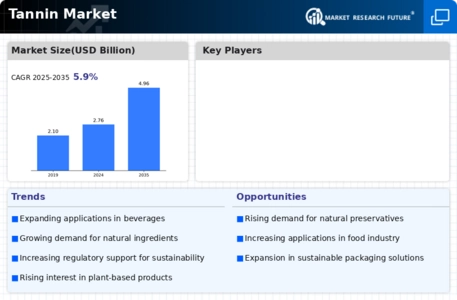
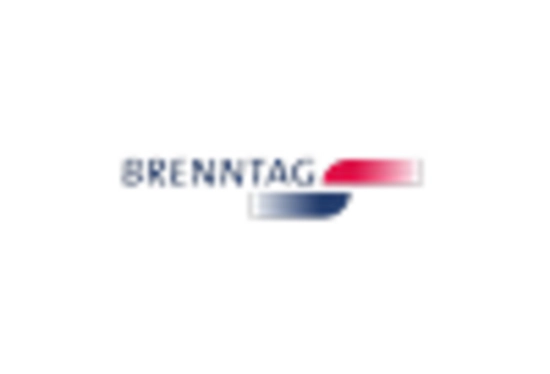
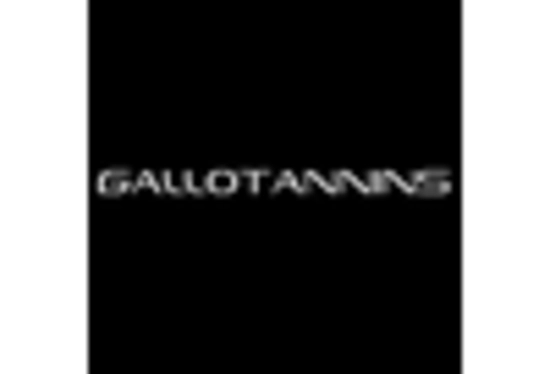
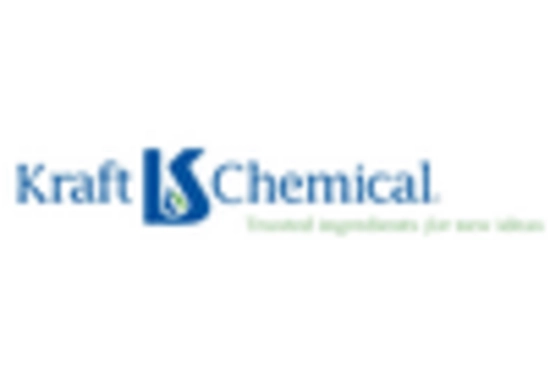
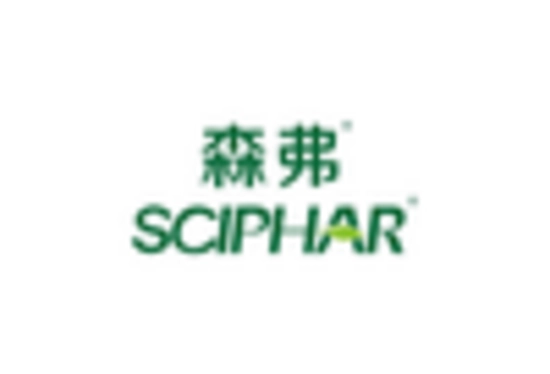
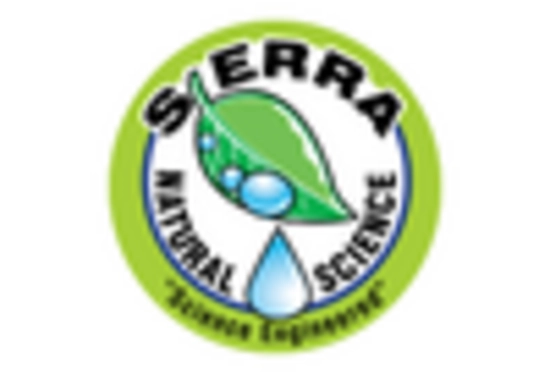
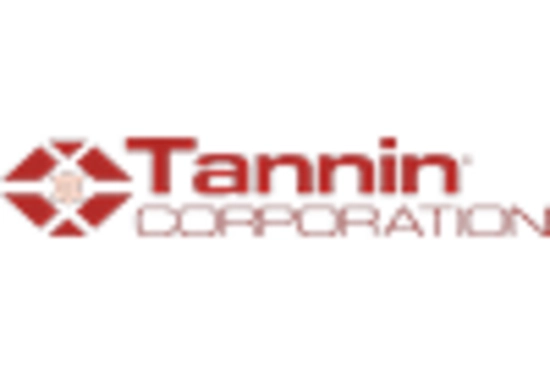

Leave a Comment